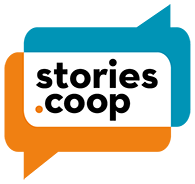The Souktana plateau, high up in Morocco’s Sirwa mountains, is planted with purple fields of Crocus sativus, the flower whose dried stigmas are known as saffron, the world’s most expensive spice.
Producing saffron is labour-intensive work. The flowers must be picked manually at dawn, while still closed, and the tiny stigmas are separated by hand. It takes approximately 150,000 flowers to produce just 1 kilo of saffron, which could have a final retail price of close to €9,000 in Europe. Despite this, the producers traditionally sell their saffron at very low prices to middlemen.
The Coopérative Agricole Taliouine was founded in July 2004 to help a group of producers market their saffron more directly. Based in Tassousfi, 12 kilometres from Taliouine, it has 11 members in nine villages in the Tassousfi and Sidi Hssain rural communes. The cooperative’s members produce saffron and olive oil, which the cooperative markets with the aim of improving the living conditions of the farmer-members, promoting the local products and supporting and developing the farms. The cooperative also has modern equipment for pressing and bottling olive oil. It currently provides jobs for two local young people, a full-time manager and a farm worker and tractor driver for most of the year.
M’hand Nid Taleb is the president of the Coopérative Agricole Taliouine. “The cooperative is a community that doesn’t only care about profitability, but also about meeting the needs of its members and improving their quality of life,” he says. “Being part of an active cooperative, members can strengthen their own social and economic role in their community and, perhaps more importantly, unite in a common cause, reduce isolation and develop their skills and confidence.” “In the future,” he says, “the cooperative hopes to strengthen the capacity of its members, strengthen the cooperative network in the saffron industry, create networks of marketing cooperatives at a national and international level, and improve production.”
The cooperative also sees itself as a pilot project, raising awareness among saffron producers to band together in farmers’ organizations. It is supported by ORMVA, the Regional Agricultural Development Authority, as well as Migrations et Développement, a non-governmental association set up by Moroccan migrants working in France to improve rural development in the Souss Massa Draâ region.
Since 2007, the saffron has also been a Slow Food Presidium. As part of its biodiversity-protection activities, the international Slow Food association identifies food products around the world at risk of extinction and sets up Presidia projects to protect and promote them. By belonging to the Presidium, the Coopérative Agricole Taliouine producers have a chance to bring their saffron to international events like the Salone del Gusto in Turin, Slow Fish in Genoa and Eurogusto in Tours.
Their saffron is also now sold through fair-trade channels, like Altromercato in Italy, though the olive oil is still only sold on the local market. Slow Food also provides technical assistance to the producers. The cooperative’s total annual production of saffron has grown from 17 to 40 kilos since the Presidium was established. And according to the Slow Food Foundation for Biodiversity website, “by maintaining saffron cultivation, increasing the availability of water and ensuring a fair return for the painstaking manual work, people in Taliouine will be able to remain on their land, keeping their traditions and territory.”
